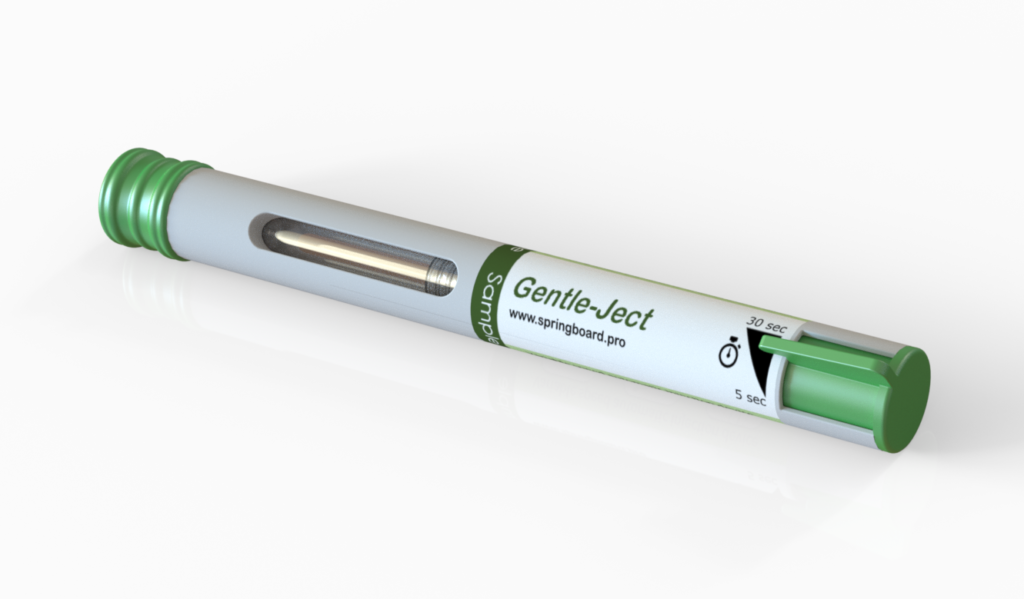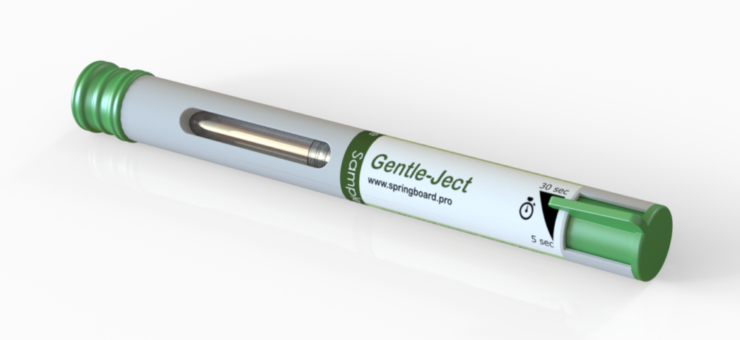Let the patient decide: an autoinjector with patient-settable injection time
24 September 2018
Autoinjectors have to inject the drug within a reasonable range of time.
The minimum injection time is set by potential discomfort.
The maximum injection time is set by one or more of:
- The patient wanting the injection to be over as soon as possible;
- It could be difficult to hold an autoinjector steady for more than a few seconds; and/or
- We cannot expect people to count time accurately, so they might not wait long enough before removing the autoinjector if it takes more than a few seconds.
However, patients are diverse: some might prefer the injection to be over as soon as possible; but others might prefer a longer, more gentle, injection.
So can we design a device to let the patient set the injection time before starting the injection?
There are several injection devices on the market that do this, but they are electronically controlled and so carry a burden of cost and complexity which could not be justified in many cases.
We set ourselves the challenge of designing a mechanical autoinjector where the user can set the injection time, and this is what it could look like:

It is obvious to see that the patient (or carer, parent, doctor, nurse etc.) can move the lever on the right to set the injection time. Here, they can choose anywhere between 5 seconds and 30 seconds.
The user can then remove the green cap on the left hand end, and press against their skin to trigger the start of injection.
If you are interested in this concept, or any other drug delivery device development questions, please get in touch with Tom Oakley at Springboard.
Appendix: the limits on device design
The article above is written from a user-centred design perspective. In practice, there are engineering limitations on injection time.
Autoinjectors with low viscosity drugs and/or small injection volumes can inject fast, such as 3 seconds for EpiPen. [1] On the other hand, some biologics need up to 15 seconds for 1 mL injections. [2], [3]
There are some drugs which require a volume of more than 1 mL to be injected, which could require a longer injection time again.
Typically, the reason that autoinjectors cannot inject viscous drugs quickly is that it takes a large force to push the drug through the needle quickly, and increasing the force can break the syringe or cause problems like creep during storage before use. We could use a larger diameter needle, but patients prefer thinner needles. [4]
Acknowledgements
Many thanks to my Springboard colleagues Jafarr Adam for the autoinjector CAD model and decals and Rachel Lewis for the renderings.
References
[1] National Institutes of Health, USA
[2] Cimzia AutoClicks Instructions for Use
[3] Enbrel Instructions for Use
[4] Anderson B and Redondo M, “What can we learn from patient-reported outcomes of insulin pen devices“. J Diabetes Sci Technol. 2011


